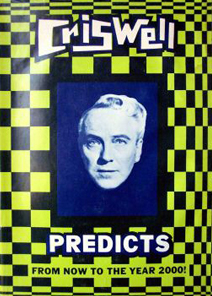Predict and it shall be provided, part one

You can call the Heathrow consultation many things, but there's one phrase the Government doesn't want you to use: 'predict and provide'. But what does predict and provide mean - and is it a fair description of the industry's unprecendented expansion plans? In the first of two articles, I'll focus on how a phrase that was once transport policy gospel fell into ill repute.
For years, transport policy was based around a growth model, whereby the Department for Transport would "provide road capacity where and when it will be required". This primarily applied to traffic growth - road building - and it was widely (and erroneously) held by civil servants that the "main drivers of traffic growth [were] outside policy control"; they felt that income was the primary driver of growth - and who in the 80s was going to suggesting reducing that?
In the 80s, when predict and provide reigned supreme, no one wanted to restrain traffic growth generators; traffic growth was even justified as an economic benefit, bringing increased mobility. So officials around the country looked at the current growth of traffic, predicted that this would continue and provided the road space for it to grow into. And low and behold, traffic grew and grew.
Of course, what no one seemed to realise was that this growth was only possible because the Government was creating the capacity for traffic to grow into. Unfortunately this growth was not linear, but exponential; more roadspace reduced congestion and journey times - encouraging more people to drive and generating more traffic. More people driving lead to more congestion, and cries for more roadspace. Of course, this fitted the predict and provide model, so no one thought anything was amis.
As time went on, towns and villages became dominated by motor vehicles, and short journeys which would otherwise have been taken on foot or pedal cycle became de rigeur to drive. Society adapted to increased mobility and services which had once been within walking distance began to relocate. Supermarkets, business and retail parks moved out of town where land was cheaper (and closer to the motorway), killing off smaller shops in town centres and generating yet more traffic. Trips which would have been possible on foot a decade before came to require the car, as people drove from out-of-town shopping centre to out-of-town shopping centre.
Soon small villages and towns were begging for a bypass to escape the roar of traffic noise - only for traffic to keep increasing even after the local woods had been replaced by a dual-carriageway. In the early 1990s things reached fever ptich as the Government tried to build its way out of congestion, announcing the biggest road-building scheme the UK had ever seen. Recognising that it was impossible to out-build the traffic, a motley coalition of direct activists, NIMBYs, National Trust members and all those who prefer the smell of wet pine to wet tar came together to fight proposals which would have lead to unprecented traffic growth and locked us further into an life behind the wheel.
Predict and provide was unofficially abandoned when Labour came to power in 1997, as officials woke up to the concept that roads generate traffic and car dependence reduces choice. 'With it' civil servants now talk of promoting sustainable travel - reducing our dependancy on the car, and promoting walking, cycling and public transport. Policy now focuses on "manag[ing] demand to match supply" - letting congestion dissuade people from driving, although measures like road-user charging ape the effects of congestion by rewarding drivers who choose less 'busy' (read: in demand, and hence expensive) roads in favour of off-peak trips or even (heaven forbid!) trips on public transport.
So: predict and provide is a growth model where the Government extrapolates current growth rates into the future, and provides the space for the growth to take place. Restricting growth is "outside policy control", and therefore not explored as a serious option. In part two I'll explore the Heathrow expansion (and aviation growth in general) and see whether predict and provide is back.


